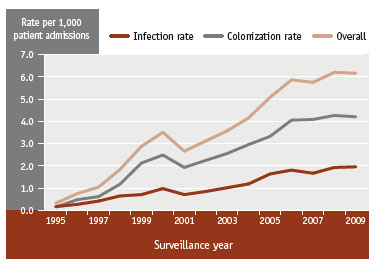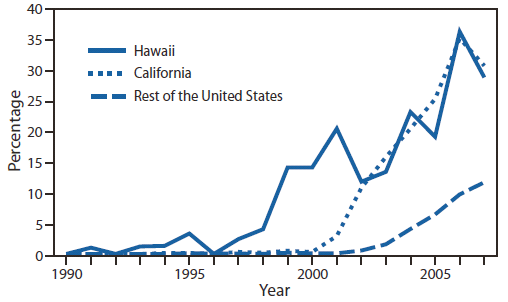Overview
This article is going to look at disease from 2 perspectives. The personal one and then the global implications. The implications for where you live, migration and social stability are important.Personal
Don't get sick in the first place. You don't want to have to go to hospital. Do everything you can to stay healthy, this is something that your doctor can't prescribe.Eating five daily portions of fruit and vegetables is associated with a lower risk of death from any cause, particularly from cardiovascular disease ... finds a new study.(link)Antibiotics and evolving organisms have created a large problem that will not go away. If you catch something from a hospital, it will drain your financial resources. The organisms are evolving quickly.

Hospitals are a breeding ground. The longer you stay in the more likely you are to catch something.

Not all states are equal

Life style choices are important too. From this page, here is what is happening with multiple drug resistant Gonorrhea. The days of free love are over.

Global
IPCC conservatively estimates 90cm sea level rise at or before the end of the century. That puts;42 million people at risk within Indonesia
Roughly 17 million in Bangladesh
64 million in China
4 million in USA
7 million in India
You get the idea.
There will be effects other than just sea level rise, in particular drought and heat. All this adds up to migration. When the people move disease will come with them.
In most immigrant source regions, infectious diseases continue to represent major causes of death and morbidity due to respiratory infections, gastrointestinal and diarrheal diseases [12], tuberculosis [13], and HIV infection/AIDS [14]. The risks of infectious disease acquisition in those source nations are manifest in certain immigrant and migrant populations after they move to their new destination. As migration continues in an increasingly globalized world, health care providers at the primary care and specialist level can expect to be faced with the challenges of recognition, diagnosis, and management of diseases that are themselves the consequences of international factors.
http://cid.oxfordjournals.org/content/38/12/1742.full
Here is a map of TB

And it is growing

TB and HIV in South Africa
You can see the risk for Europe and southern USA. TB spreads through the air, so it is serious.
Ebola
I am going to use Ebola as an example of disease risk through migration. However, Ebola while highly contagious, is only contagious through bodily fluids (UPDATE: well, unfortunately that is not entirely true transmission through limited air distance is possible). As such it is not the risk as a mutant form of the flu might be. Should it appear in Southern Europe as I speculate it might, I believe it will be contained. The strain of Ebola known as Ebola Reston is only known to exist in the Philippines. That strain is not damaging to humans, but is contagious through the air. If the Ebola Zaire and Ebola Reston strains ever mix, then the situation will get even worse at an incredible rate.There is no vaccine against Ebola Zaire. It is very infectious and can kill in a short time with 90% mortality. So far it is only found on the African west coast, but it is not contained. If it spreads throughout Africa, coinciding with high temperature anomalies Europe could be hard hit through migration. In the migration article, I mention that a lot of people wanting to migrate to Europe actually pass through the Ebola contaminated areas. This disease has an incubation period of up to 3 weeks.
There are some real factors working against its containment right now. There is a sort of conspiracy theory going on among locals that the UN is actually bringing it into the country. Health staff have even been attacked. The Red Cross in Guinea said it had been forced to temporarily suspend some operations in the country's southeast after staff working on Ebola were threatened on Wednesday. "Locals wielding knives surrounded a marked Red Cross vehicle," a Red Cross official said, asking not to be named. An MSF centre elsewhere in Guinea was attacked in April by youths saying the charity brought Ebola into their country.
Now a new conspiracy theory has emerged (link).
Police were guarding an Ebola treatment center in Sierra Leone on Saturday, the day after thousands marched on the clinic following allegations by a former nurse the deadly virus was invented to conceal "cannibalistic rituals" there, a regional police chief said.People are already trying desperately to immigrate anyway they can to escape conflict. Southern Sudan will create additional burdens. Climate change would make this worse, but so far Africa has really been spared the temperature anomalies the rest of the world is seeing.
Historically, El Nino results in drier than normal conditions for the African East coast. Let's hope the Ebola situation gets contained soon. The longer term issue is that without a vaccine this could be a real threat. The problem is that as the world warms the African West coast becomes uninhabitable. See the maps at the end of the where to live post. That area of Africa will not be sustainable for habitation in the traditional sense. The people will have to move. Though it is likely that this situation may have been resolved by then, as the mortality rate is so high and containment relatively easy (if people abide by guidelines).
Mosquito-born diseases
A human is the host, the mosquito bites and becomes the carrier to another human. This will have wide implications as humanity starts to migrate. The higher the density of people the more targets,
Most adult female mosquitos live 2-3 weeks. They have a range of up to 3km per day from their breeding site. If a community is isolated and clean of disease the risks are vastly reduced. Here is a mosquito containment plan, it has a lot of good practical advice.
Malaria
Malaria was thought to be coming under control. Once again evolution has kicked in, it seems throughout Asia it is getting multiple drug resistant (MDR). This hasn't hit Africa yet. But the implications with migration is important and are studied in this document. The basic premise is that to control it while populations are migrating, means controlling it at the source. As, at least, the Asian source is going MDR the outcome with climate change is dark.
Chikungunya
Chikungunya has been spreading out of Africa into the Indian Ocean region, Asia and Europe in recent years. So far, more than 400 travelers have carried it into the U.S. and it has spread for the first time in Florida and the New York area. The Pan American Health Organization reports more than 900,000 cases since December across the Caribbean and Central America. It has killed 25 people. It’s carried by the same mosquitoes that carry dengue and West Nile. It’s not especially deadly but it’s very painful and up to 90 percent of infected people feel sick. Chikungunya does not spread person to person, but if a mosquito bites an infected person and bites someone else, it can spread that way. Clinics are on the alert for it.
(link)
Dengue
Dengue is moving into the United States, especially in Florida and south Texas. Three people have died recently in the U.S. from dengue. Like chikungunya, it’s spread by mosquitoes and health experts are on alert for cases among people who have not traveled. Dengue is the world's fastest-spreading tropical disease and WHO says it represents a pandemic threat. It can cause a hemorrhagic fever — a fairly horrific set of symptoms that include bleeding under and on the surface of the skin. The good news is that only about 20 percent of people infected with dengue show any serious symptoms at all. It’s another one that doesn’t pass person to person.
(link)
West Nile Virus
Prior to the mid-1990s, WNV disease occurred only sporadically and was considered a minor risk for humans, until an outbreak in Algeria in 1994, with cases of WNV-caused encephalitis, and the first large outbreak in Romania in 1996, with a high number of cases with neuroinvasive disease. WNV has now spread globally, with the first case in the Western Hemisphere being identified in New York City in 1999;[1] over the next 5 years, the virus spread across the continental United States, north into Canada, and southward into the Caribbean islands and Latin America. WNV also spread to Europe, beyond the Mediterranean Basin, and a new strain of the virus was identified in Italy in 2012. WNV is now considered to be an endemic pathogen in Africa, Asia, Australia, the Middle East, Europe and in the United States, which in 2012 has experienced one of its worst epidemics. In 2012, WNV killed 286 people in the United States, with the state of Texas being hard hit by this virus, making the year the deadliest on record for the United States.(link)

No comments:
Post a Comment